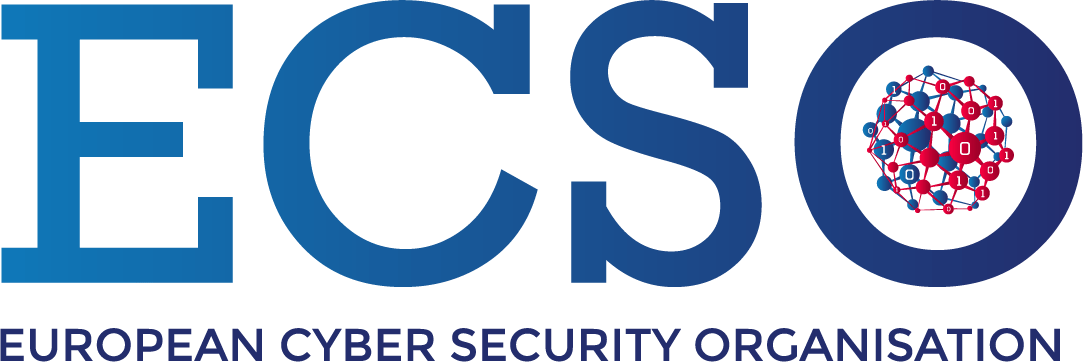Blog Post
Cybersecurity GRC: Harnessing a Holistic Approach
January 30, 2025
TL;DR
- Cybersecurity GRC integrates governance, risk management, and compliance into a cohesive framework to address the complexities of cybersecurity.
- GRC in cybersecurity provides organizations with a framework to holistically manage risks, meet regulatory requirements, and align with broader business objectives.
- Effective GRC programs help identify and mitigate vulnerabilities, enhancing resilience and ensuring accountability.
- Key components of cybersecurity GRC include risk registers, governance policies, proactive risk management strategies, and adherence to regulatory standards.
- Common challenges include resource constraints, evolving regulations, resistance to change, and difficulty in defining success metrics.
- Advanced tools such as compliance management solutions, cyber risk quantification platforms, and incident response tools are critical for successful GRC implementation.
- The future of cybersecurity GRC emphasizes scalability, proactive management, and cross-functional collaboration to address the increasing integration of cybersecurity across operational processes.
The Emergence of Cybersecurity GRC
Managing risk is not an isolated process; it involves a series of coordinated efforts, sometimes spanning across teams, to identify threats, mitigate vulnerabilities, and ensure the organization remains resilient. This comprehensive approach, while not necessarily novel, having been around for hundreds of years, has only recently formally evolved into what's been coined as GRC programs, allowing businesses to integrate the various components related to governance, risk management, and regulatory compliance into a cohesive and efficient framework.
In the realm of cybersecurity, these frameworks have emerged as especially useful, considering how much overlap there is when comprehensively addressing digital threats. Cybersecurity GRC provides a systematic approach to tackling the nuances that go into tackling cyber challenges and ensures that efforts remain coordinated and aligned with broader business objectives. With a robust cybersecurity GRC program, organizational leaders can holistically manage risk and maintain a clear, unified perspective on the organization's security and compliance efforts.
What Is GRC in Cybersecurity?
Governance, risk management, and compliance (GRC) in cybersecurity is a structured framework that combines these three critical elements into a single management system, enabling organizations to address these digital risks from different angles. By uniting these considerations and functions, cybersecurity GRC helps organizations safeguard sensitive data and demonstrate accountability to stakeholders and regulators.
Governance
Governance refers to the processes and policies that will help guide decisions vis-a-vis end users and IT assets. It also involves defining stakeholders' roles and responsibilities when overseeing initiatives. For instance, a governance policy may be that only specified personnel are allowed to download software programs. In cybersecurity, governance also establishes accountability and oversight for managing digital risks and protecting sensitive information. Clear expectations are set but are nevertheless adaptable according to evolving needs.
Risk Management
Risk management in cybersecurity GRC involves assessing the potential threats that could impact the organization's operations and IT assets. These assessments will typically evaluate the likelihood and impacts of threats and then determine the controls necessary to reduce these risks to levels that align with the risk appetite. Effective risk management requires a proactive, systematic approach, such as leveraging an on-demand cyber risk quantification solution to prioritize vulnerabilities and allocate resources efficiently.
In the corporate world, there are four options for risk management, each of which has its pros and cons.
- Avoidance: It involves completely eliminating the activity or situation that creates the risk. For example, a company may choose not to use a specific solution to avoid a third-party incident. While avoidance is the only option that totally removes the risk, it also limits opportunities.
- Mitigation: It focuses on reducing the likelihood or impact of risk through internal, proactive measures and may include implementing advanced cybersecurity controls, employee training programs, or new threat detection tools. Mitigation allows the organization to address risk without abandoning initiatives but often requires investment and monitoring.
- Transfer: It shifts the financial burden of a risk to a third party, such as a cyber insurance provider. This option provides a monetary safety net for high-impact events but does not mitigate the likelihood or potential impact of the risk itself, meaning organizations still need to invest in other cybersecurity measures.
- Acceptance: It takes place when risk owners acknowledge that the risk exists and decide to tolerate the potential consequences. Acceptance is often the approach for low-likelihood or low-impact risks where mitigation or transfer may not be cost-effective. However, acceptance requires a clear, realistic of the forecasted outcomes and demands a carefully coordinated plan if the risk does, indeed, materialize.
Compliance
Compliance is the practice of adhering to laws, standards, and internal policies that govern an organization's operations. Failing to meet certain standards, such as ISO 27001, may primarily result in reputational damage, while non-compliance with laws and regulations often carries the risk of legal consequences. The US SEC, for example, charged four companies in 2024 for misleading cyber disclosures and compelled them to pay exorbitant fees. Compliance also involves conducting regular audits to verify adherence and to subsequently address any gaps.
Creating a Cybersecurity GRC Program
The first step in creating a robust cybersecurity GRC program is to define clear objectives that align with the organization's overall strategic goals and determine what needs to be accomplished. While objectives range from pursuing risk mitigation initiatives to complying with various regulations, they should be prioritized according to this broader business mission. With a clearly laid out GRC blueprint, organizations are more prepared to measure subsequent progress.
The next step is to create a risk register in which the entire spectrum of the organization's risks are identified, documented, categorized, and supplemented with pertinent details. With a comprehensive risk register, security and risk management (SRM) leaders develop a deeper understanding of the specific vulnerabilities and threats the business faces regarding its high-level objectives, allowing them to plan their cybersecurity GRC programs accordingly. Moreover, a robust register provides greater visibility across teams, facilitating collaboration and enabling more holistic decision-making.
The final step is to pursue agreed-upon initiatives, such as implementing new security controls and deploying advanced security solutions, and then continuously tracking effectiveness. The regular evaluation ensures that resources are being properly allocated and projects are being completed in a timely fashion. Additionally, it presents an opportunity to reassess priorities, ensuring that the cybersecurity GRC program remains aligned with evolving organizational objectives and emerging threats.
Why Is GRC In Cybersecurity Important?
When properly executed, GRC in cybersecurity brings numerous benefits to the organization, strengthening its ability to navigate cyber risks with certainty and comply with regulatory requirements. For instance, because, with the risk register, stakeholders are able to proactively identify and address potential threats, cyber risk management strategies are more likely to lead to a state of resilience. SRM leaders can clearly see which initiatives need to be prioritized according to both the organizational context and external risk landscape.
Another key benefit of a robust cybersecurity GRC program is the clear delineation of controls necessary for achieving compliance, allowing businesses to meet regulatory standards and, thus, avoid the legal penalties associated with potential violations. Enterprises are also able to better understand the effort required to obtain non-mandatory security certifications and demonstrate their commitment to industry best practices, which can enhance stakeholder confidence and improve competitive positioning.
Processes and projects, having been comprehensively aligned, are significantly streamlined, improving resource management and boosting organizational productivity. Additionally, employees become more aware of the role that cybersecurity GRC plays in daily operations, promoting a culture that values accountability and adherence to cyber best practices.
The Challenges of Implementing a Cybersecurity GRC Program
Like any other business process, although implementing a cybersecurity GRC program brings tremendous value, it does not come without its fair share of challenges. Security and risk management leaders often encounter obstacles that have the potential to impede their goals, necessitating careful planning and adaptability to overcome them. Some of the most common challenges when establishing a GRC program include:
- Resistance to Change: Leadership and employees often resist change. They may be reluctant to adopt new operational frameworks or start using new solutions. The resistance often stems from a perceived lack of disruption to existing workflows and a lack of understanding of the benefits these changes bring.
- Resource Constraints: Developing and maintaining a cybersecurity GRC program requires a significant amount of time investment, not to mention financial capital. Smaller organizations, in particular, may struggle to find these resources and, if they do have them, cost-effectively allocate them. Stakeholders at larger organizations, while they may have the resources, may need to be persuaded.
- Evolving Regulatory Landscape: Keeping up with continuously changing regulations and standards is difficult, even for mature enterprises. Moreover, there is often an overlap between these regulations, and it can be difficult to keep track of them. Ensuring ongoing compliance demands that the organization remains agile, which can place an additional strain on resources.
- Measurement and Metrics: Defining clear metrics to calculate the effectiveness of a cybersecurity GRC program is an obstacle that many businesses face. Without proper benchmarks, SRM leaders will struggle to track progress and justify continued investment. To combat this challenge, many organizations have adopted on-demand cyber risk quantification, which offers objective, data-driven metrics to measure progress.
- Technology Gaps: The inability to integrate existing tools with new GRC solutions and processes can impede the effectiveness of the program. Choosing the right technology to support new GRC frameworks is critical but is a challenging decision that often consumes a lot of time and resources. Choices will need to be justified with data-driven insights.
- Continuous Improvements: A robust cybersecurity GRC program unequivocally requires ongoing monitoring and refinements to remain relevant. Maintaining momentum after initial implementation, however, is an obstacle that many face, especially in the face of competing priorities. A cybersecurity GRC leader has to remain persistent even when others lack motivation.
Cybersecurity GRC Tools and Technologies
Because developing a cybersecurity GRC program is such a massive project, it necessitates the support of advanced tools and technologies to improve efficiency and ensure continuous maintenance. There are several solutions that can empower organizations to manage the complexities of cyber governance, risk, and compliance in a unified, scalable way, but a few of the most valuable ones, continuing most to GRC program success, are:
Security Information and Event Management (SIEM) Tools
SIEM tools aggregate and analyze security data from various internal and external sources to detect threats within an organization and ensure that incident response processes are aligned with higher-level GRC objectives. These tools help cybersecurity teams monitor systems in real-time, equipping users to proactively combat cyber risk and, if necessary, comply with reporting requirements in a timely fashion.
Compliance Management Solutions
Compliance tools automate the tracking and reporting of regulatory requirements, keeping GRC leaders organized as they face a seemingly never-ending slew of standards to comply with. Compliance solutions likewise simplify auditing processes and can help ensure adherence to security frameworks such as GDOR, HIPAA, and ISO 27001. Ultimately, these tools allow organizations to maintain total transparency in their compliance maturity levels.
On-Demand Cyber Risk Quantification (CRQ)
Cyber risk quantification solutions translate complex cyber risk into easily understandable business terms, not only helping SRM heads make more informed, data-driven decisions but also ensuring they can collaborate with non-technical stakeholders. Kovrr's CRQ platform, for instance, offers actionable insights into the financial impact of cyber risk, allowing businesses to prioritize mitigation strategies in a manner that aligns with risk appetite and allocate resources more effectively.
Policy Management Software
Policy management tools centralize the location of organizational policies. Within the platforms, stakeholders can create, distribute, and monitor internal procedures and rules, making sure that everyone is fully aware of the proposed best practices. Indeed, these tools make governance policies accessible to all employees and can even track adherence. No one will have the excuse of not knowing about a certain policy or update.
Incident Response and Business Continuity Solutions
Incident response tools serve organizations as they manage and mitigate the impact of security breaches or other cyber-related events. They generally help contain the incident and minimize disruption levels. Business continuity planning software complements these tools, helping cyber teams to recover operations efficiently. In a strong cybersecurity GRC program, it's widely accepted that events are inevitable. Therefore, adopting solutions that help manage them is crucial.
The Future of Cybersecurity GRC
As cybersecurity becomes more embedded across all operational processes, organizations are no longer treating it as a standalone function. Instead, they are integrating it with broader governance, risk, and compliance principles to ensure that every decision, policy, and action aligns with high-level strategic goals. The future of GRC in cybersecurity lies in adaptability and proactive management, with business leaders anticipating risks and compliance issues and mitigating them well before they materialize.
Additionally, the emphasis on cross-functional collaboration in the GRC process will increasingly play a larger role in long-term market success. Cybersecurity will be seen as a shared responsibility that demands the effort of everyone throughout the organization, from board members to entry-level employees. This cultural shift will be crucial not only in terms of profitability but also so businesses face mountain pressures to demonstrate accountability to both customers and investors.
Finally, the future of cyber GRC will also focus on scalability, considering that businesses will continue to expand into new markets and adopt emerging technologies. Cybersecurity GRC programs must grow according to these changes and, likewise, account for a slew of new regulatory environments and operational complexities. In the prioritization of flexibility and innovation, SRM leaders can ensure their GRC programs remain robust, relevant, and resilient.
To learn more about how to leverage cyber risk quantification when developing a cybersecurity GRC program, schedule a free demo with one of our experts today.





.webp)
.jpg)


